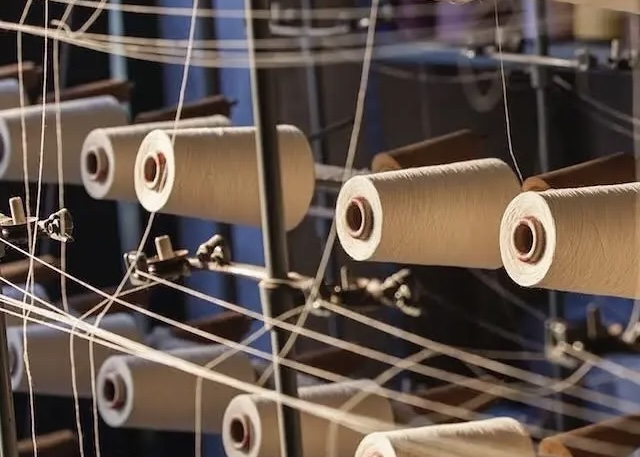Loom Weaving
Thread Transforms into Beauty

The philosophy of our artisanal weaving cannot ignore the careful selection of raw materials and respect for manual workmanship.
The yarns used to weave all our creations are Egyptian pearl cotton and yarn-dyed linen, fibers of the highest quality.
They are the best in terms of non-toxicity and fade resistance, as they are natural fibers.
Giaquinto products are therefore velvety to the touch and, in addition to being highly durable, the colors of the yarns make them bright and iridescent to the eye.
The fabrics are made using the Jacquard technique, named after the inventor who built the machine, which allows for the insertion of complex decorative motifs into the fabric design.
From material to fabric: the seven stages of processing
Artisanal weaving requires time, precision, and mastery. The entire production cycle takes place in our workshop in Gagliano del Capo, in the heart of Salento.
Here are the main steps:
1. Yarn preparation
Quality control, washing, and natural drying.
2. Deformation
The yarn is arranged on the warping looms according to the design to be created.
3. Weave design
Each Jacquard design is prepared using software translated into mechanical code.
4. Loom weaving
The warp and weft threads intersect to create the fabric.
5. Cutting and sewing
The fabrics are cut by hand and finished with tailoring techniques.
6. Quality control
Each item is checked manually, one by one.
7. Ironing and packaging
Final stage for the presentation and shipping of the finished product.
Knowledge passed down through three generations
Craftsmanship is our deepest value. Each product is the fruit of long family experience, a gesture that unites hands, memory, and innovation.
The result is a fabric that speaks not only of quality, but also of history, identity, and passion.
